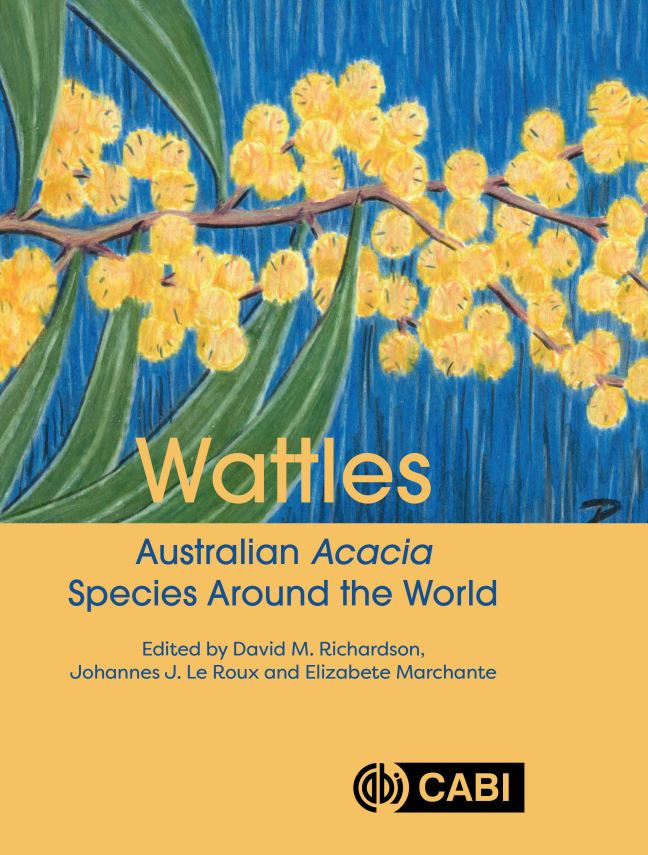NEW BOOK: WATTLES ON THE MOVE
Colin Hughes (University of Zurich, Switzerland)
Travelling through parts of South Africa or Iberia, such as southern Portugal, it would be easy to imagine that one is actually in the heart of the Australian bush, such is the abundance, prominence and diversity of species of Australian acacias that are now found in these areas. Acacia species – known generically in Australia as wattles – now dominate significant areas in parts of the world where they are introduced. In southern Portugal, alongside the wattles, are large-scale plantations of eucalypts, further accentuating just how ‘Australian’ some of these distant habitats have become. It is this process of the globalisation via introductions and invasions of wattles that is the focus of a new book: Wattles. Australian Acacia Species Around the World, published by CABI in 2023, and edited by David Richardson, Johannes Le Roux and Elizabete Marchante, who appropriately work respectively in South Africa and Portugal.
While it is well-known that the large, mainly Australian, legume genus Acacia is now one of the planet’s most widely spread plant genera, the sheer scale and extent of its anthropogenic translocation are quite staggering. As documented in this new book, 41% of the 1082 species of Acacia are known to occur as non-native species; introduced wattles have been recorded from 172 countries; 75 species have established self-sustaining populations following introductions; 28 species are classified as invasive and causing substantial ecological and socio-economic impacts. These impacts include even the establishment of novel ecosystems, so-called wattle jungles or thickets, following invasion or abandonment of Acacia plantations. Because of this, wattles have emerged as a flagship group for understanding invasion biology.
This book explores in great depth and breadth the insights that can be gained from understanding these plants. With 120 authors from 17 countries, spanning a wide range of disciplines, this book represents a gold mine of knowledge about the ecology, evolutionary biology, biogeography and macroecology, utility and invasiveness of the genus Acacia, the second largest genus of legumes, and its spectacular conquest of the world.
The book starts with a series of chapters that present a synthesis of the taxonomy, environmental amplitudes and functional trait and genetic attributes of the vast natural species pool encompassed by the genus Acacia, linking that knowledge to the invasion status and invasiveness potential of species. This is followed by a set of chapters documenting the history of introduction, spread and invasion of acacias, dubbed the Anthropocene conquest of the globe by the wattles. This synthesis is based around detailed regional studies in Europe, California, Africa, Brazil/Chile, and New Zealand, including data on the utility and perceptions of wattles by people around the world. Next, follow chapters on the biology of interactions between Acacia and other groups of organisms – symbionts, seed dispersers, pollinators, and pests and diseases – biology that underpins our understanding of why wattles are such successful invaders. It is this biological knowledge that provides the basis of potential biological control and management options in areas where wattles have invaded. There are then chapters devoted to assessments of the impacts – social, economic and ecological – of Acacia introductions and invasions. The final section of the book is devoted to discussing ways to control, monitor, manage and model wattle invasions. The concluding chapter, entitled the ‘Wattles’ Invasion Syndrome, attempts to encapsulate the key elements of why acacias are such prominent travellers and invaders. This is neatly summed up in the book as Woody Australian Trees that Transform landscapes: Leguminous, Enemy-free, with persistent Seedbanks, i.e., WATTLES!
